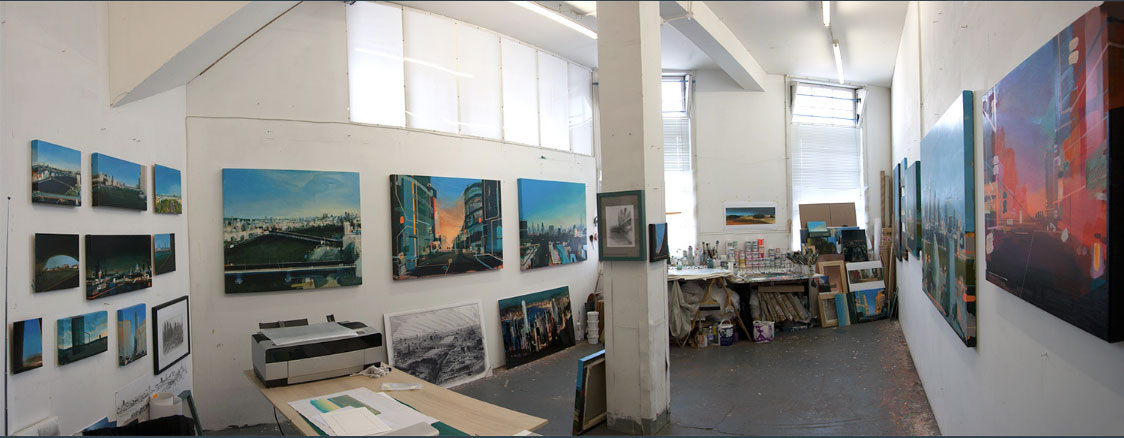
Christopher Farrell is a renowned fine artist based in London. His illustrious career began after studying Visual Arts at De Montfort University and then gaining his post-graduate degree at the RA Schools. It was at the RA Schools that he received a variety of awards and an invitation to Buckingham Palace to meet the Queen to acknowledge the achievements of young people in the UK.
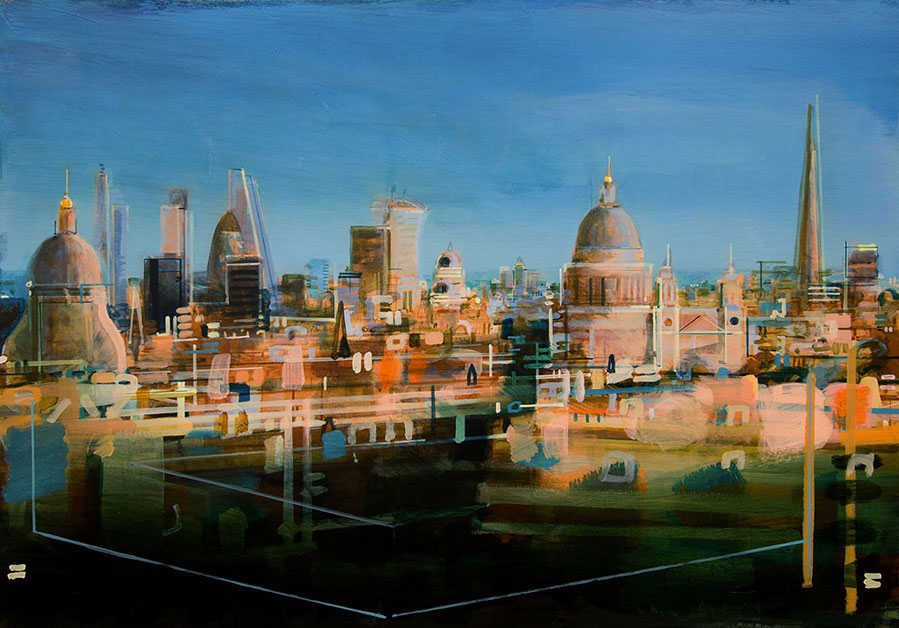
From Farringdon, 2015, Acrylic and red chalk on canvas, 90 x 131cm
Considering himself a semi-abstract figurative cityscape painter, his colorful works don’t depict a singular object but instead feature a place, a city, an urban locality. Farrell describes, “I want to make painting inspired by the city, using its space, structure and dynamics to create a contemporary vision of urban life.”
Farrell explains, “I started off as a landscape painter, painting plain-air around the hills of Leicester, over time and especially while living in London, geometric shapes and architectural forms started to creep in to my work, the paintings were a hybrid of natural and man-made forms, eventually architecture took over.”
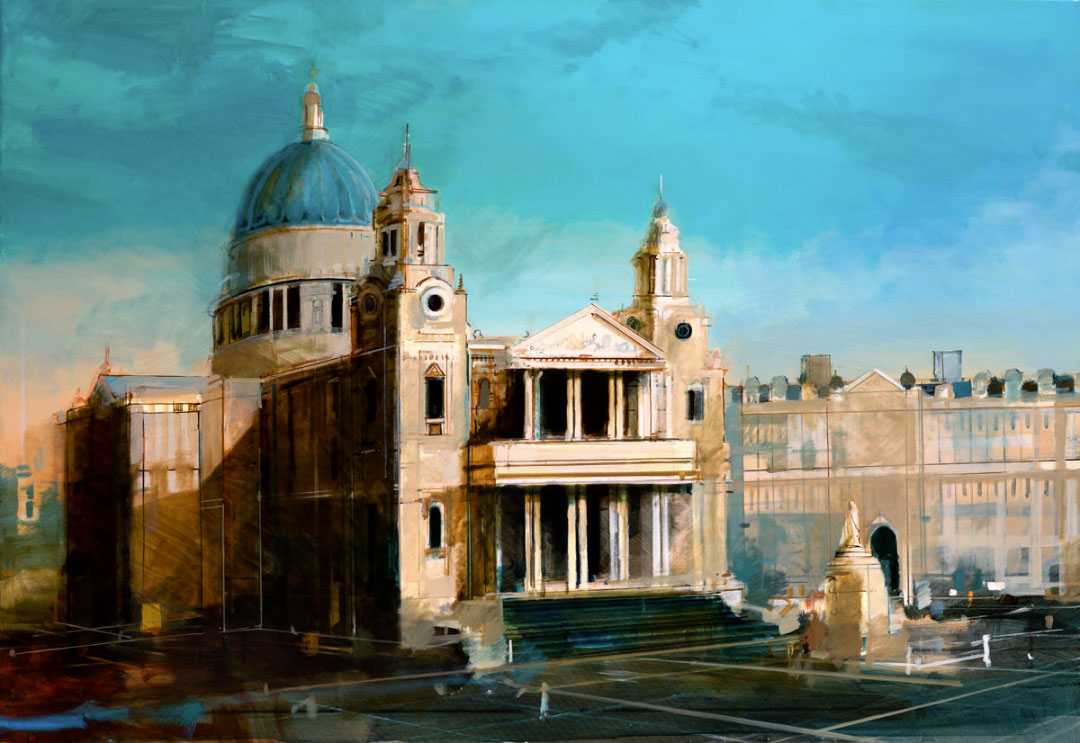
Saint Paul’s, 2011, Acrylic on linen, 91 x 31cm
Interestingly, and not obvious by his attention to detail and spatial awareness, Farrell has no background in architecture. Hard to believe that an artist with no formal architectural training could depict a city’s form in such detail, noting only that his pet peeve is “wobbly buildings.” His works are a unique combination of abstract painting over architectural renderings, with thin lines observed under thick brush strokes.
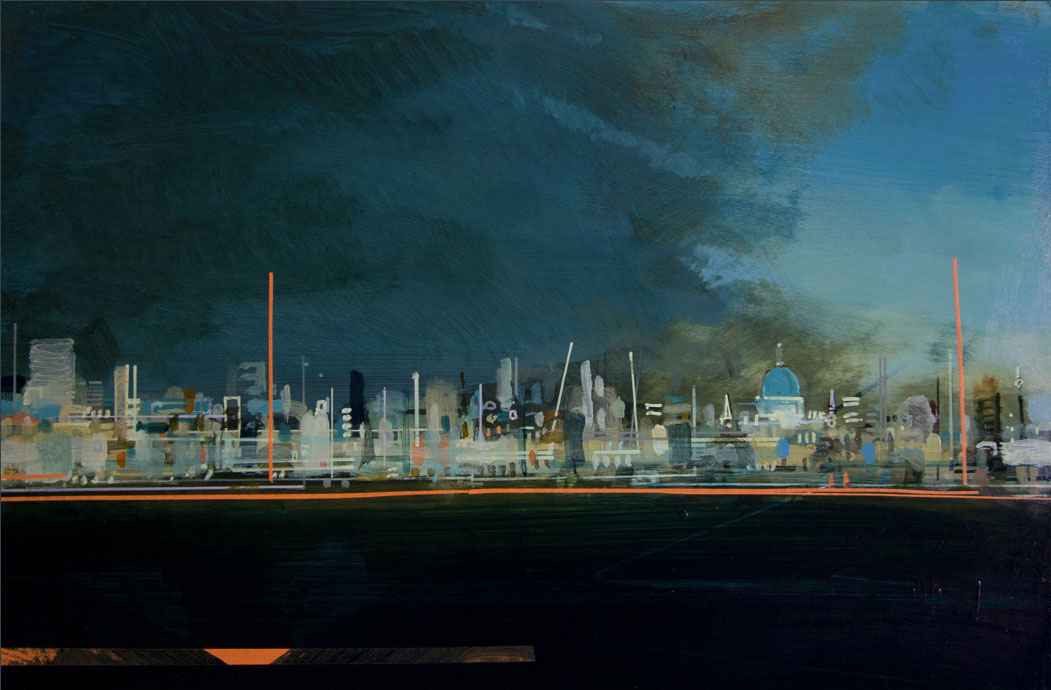
Binary Space, 2017, Oil and acrylic on copper, 30 x 45cm
For years Farrell has experimented with substrates first utilizing the most traditional, canvas, he describes its tedious nature having to prime the material around 8 times before sanding it down. Moving to Perspex he found it was too prone to scratching and poor adhesion. From there he discovered natural metals as a substrate using copper but found after years of use, although it had numerous useful qualities, its weight for large scale works became an issue.
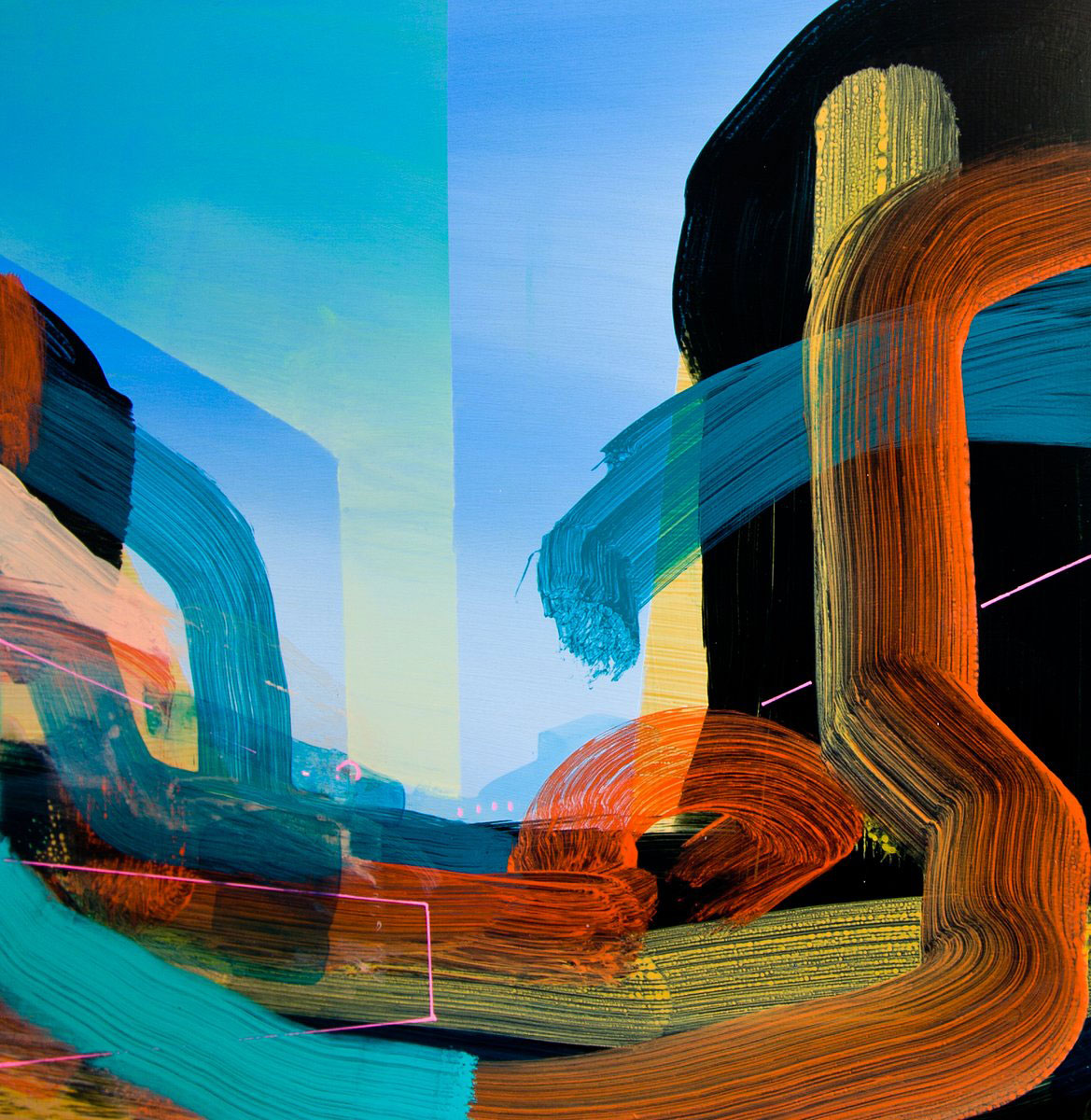
Test 40x50cm Dibond aluminum composite panel using Golden Acrylics (GAC200)
“I discovered Dibond around a month ago, so all my experiences are new. My first impression is how light and rigid it is. I initially bought Dibond as a rigid support for some Polyester Draft Film studies (which is a bit like transfer paper) I was working on. But, as Dibond is so smooth and light I would not resist trying to paint on it. Using Dibond or ACM as a substrate for my cityscape painting also adds to the meaning of my work as a lot of contemporary buildings use this material as decorative cladding as well as steel and glass,” Farrell describes.
As Dibond is a new substrate for Farrell he is currently experimenting with a variety of painting techniques to determine consistency. We are very much looking forward to his large-scale works and are following the artist closely.
ARTIST RESOURCE
For oil on Dibond aluminum composite panel, each artist has their own process for prep, paint and coating the product.
Below are Christopher Farrell’s how-to notations:
To prep the surface I gently sand down with very fine sandpaper, I then clean the surface with methylated spirits. When this is dry I use a polymer product from Golden called GAC200 which is designed to aid adhesion of the acrylics on non-porous rigid surfaces. I haven’t tried the fixative spray yet out of respect for others in my studio as it has a very strong smell. The GAC200 needs to be fully dry before painting.

